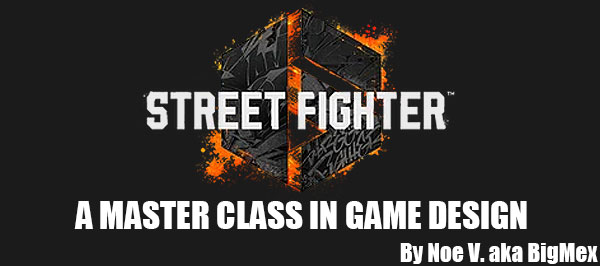
When the idea of a World Tour was brought up at Capcom HQ in Japan what do you think the team considered before settling on their format? I would argue that the first thing they had to discuss was whether or not they should have players follow around one of the named characters. Make an adventure game out of Ryu, Ken, or Chun-Li. I’m still convinced that
a Chun-Li game using the SIFU engine would be amazing. But that would make it a side game, and not a proper numbered SF title. There wasn’t much precedence for this type of game. Not including Charlie Nash, and Cammy appearing in the shooter GunSpike / Cannon Spike in 2000. That title was co-developed by Psykio as well, so it doesn’t really count as a fighter. Focusing on just one character that already became a master of their specific style would be hard to develop a narrative around. We would need to begin with nothing, and build our character up. Even Kratos, and Link had to start with weak weapons, and low stats at the beginning of their respective games; God of War, and The Legend of Zelda. Focusing on a player-created avatar, and making them the star of the game, and then having all of the SF characters have a hand in training them was the best possible decision by the SF6 team.
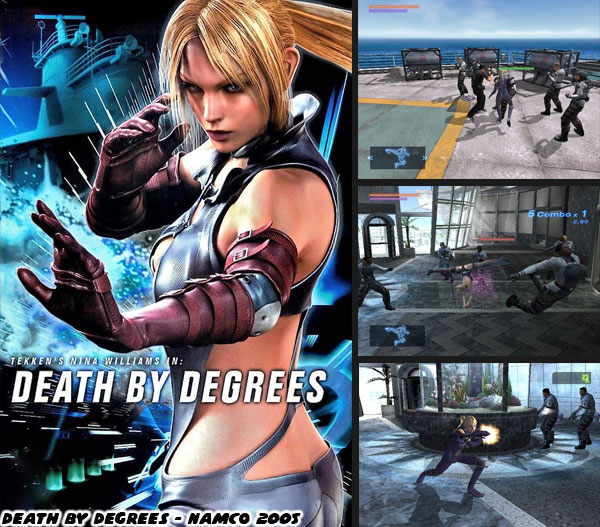
Off the top of my head the only franchise game that tried to make a solo adventure out of a star character was Death by Degrees. It featured Nina Williams, one of the main characters in Tekken, and also one of the first 3D fighting game females. It was developed and published by Namco in 2005. The game made an honest case for turning the tried-and-true Tekken mechanics, and combo systems into a 3D adventure. Nina had already been presented for years as a spy, and assassin in the Tekken cutscenes, and intro cinemas. This time we would be following her on a James Bond-type adventure. The game was good in concept, but just didn’t work in execution. Namco discovered something that was a wild card for 3D fighting game design. How to you balance free roaming 3D combat? An opponent could easily sidestep an attack, and of course if your angle wasn’t dead-on then your attacks might not even land. Also how would a camera work in this type of system? Capcom knew better than try to make the SF6 World Tour a free roam 3D brawler. As soon as a confrontation started it instantly moved to a 2D perspective. Thus there was no difference between the Arcade mode, and the World Tour.
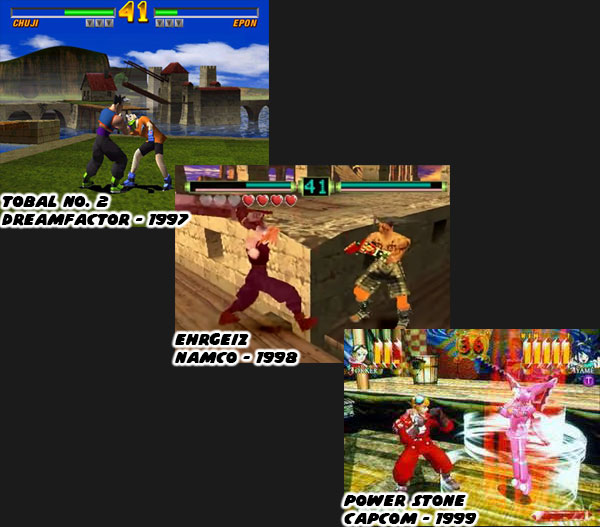
The late ‘90s saw several studios making the transition to 3D game design. Many shuttered further development on their 2D sprite engines, and got designers 3D workstations. Of all of the early 3D fighting games there were three that tried to show the possibility of story driven fighting adventures. Many from my generation had a soft spot for Tobal No. 2. It was a brilliant console game. Developed by DreamFactory, and published by Square for the Playstation back in 1997. It was a follow up to the groundbreaking Tobal No. 1, which was Square’s first game for the PS. It wasn’t just a well balanced 3D fighting game, with designs by Akira Toriyama (Dragon Ball Z, Sand Land), but also offered an adventure mode, like traditional RPGs. Then there was Ehrgeiz: God Bless the Ring by Namco from 1998. It was a well done fighter, featuring different level elevations, and dynamic environments, and also offered a quest mode. The peak of these types of 3D fighting adventures probably came with Power Stone. Produced by Capcom in 1999 there was nothing else like it in the arcade. The anime-style characters, special moves, random power-ups, and rapidly evolving stages had a sort of kinetic energy that you needed to play with a group in order to appreciate.
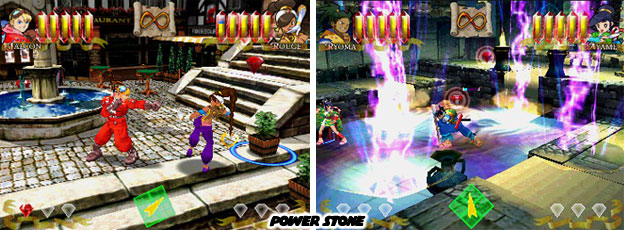
As fun as these games were they didn’t quite translate the feeling of a traditional fighting game into 3D. The most ambitious attempt at AAA 3D fighting adventure went to Sega. The studio was one of the first to use polygon graphics in racing, flying, and fighting games in the early ’90s. If anyone could crack the code it would have been them.
Sega actually tried to build a 3D brawler franchise, starting with Dynamite Cop, and then creating SpikeOut. It was an excellent game, and one that I actively sought out when I saw an ad for it in a Japanese game magazine. It got a more fighting game friendly update called Spikers Battle in 2001, and a console exclusive sequel called Spikeout: Battle Street for the Xbox in 2005. As fun as the game was it highlighted the difficulties of trying to make a brawler in 3D.
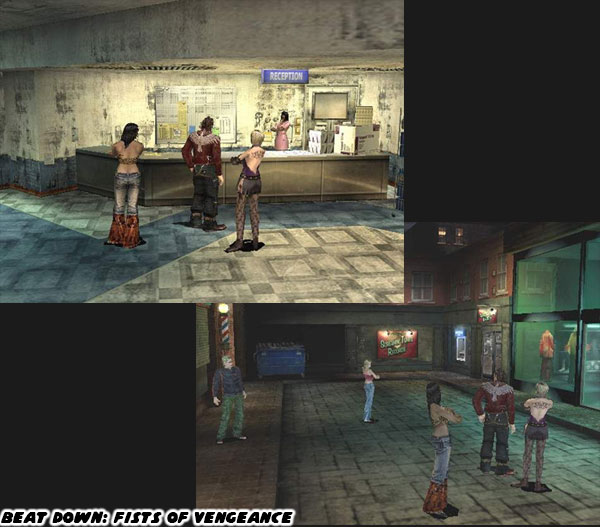
Capcom wanted to be the studio to create a modern Final Fight. An urban brawler that was more mature in tone than other games. The Gen-Xers that grew up on the classic arcade hits were now adults, many with children of their own. They had gravitated to more serious titles. This was especially true of many in the US. The Twisted Metal, Grand Theft Auto, and God of War series demonstrated the look, and feel that a lot of players wanted to see. A developer named Cavia had created a dark, and gritty 3D brawler named Beat Down: Fists of Vengeance. You could recruit, or extort rival gangs on your quest to take over a city. Capcom published the game in 2005. That same year Namco also released an urban brawler named
Urban Reign. It used the Tekken combo building mechanics, and the moves from various Tekken characters for your custom characters. Both titles allowed you develop your own movesets. Which was something new to the format.
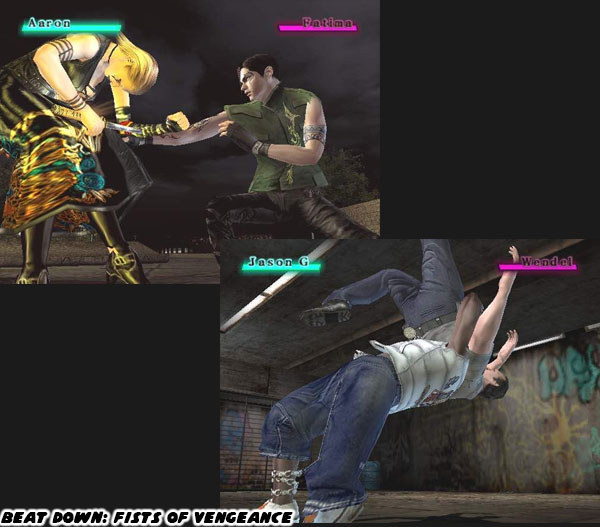
Both games failed with critics, and audiences. They were average-at-best experiences despite some solid ideas, and decent character designs. Capcom knew that there was still a demand for brawlers, and fighting games. They decided to dig into their IP, and make a big push for the genre. In 2006 Capcom Studio 8 would release the first new Final Fight game in seven years. It would also be the first game created exclusively by their US studio. If anybody understood the western audience it would be the Team USA members. The game that came out left me bewildered.
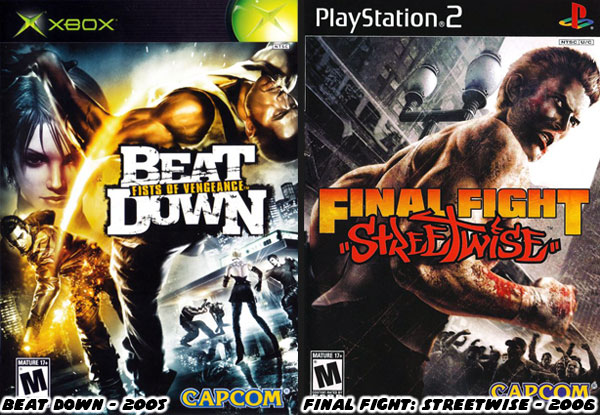
Actually I wasn’t as bewildered as much as I was disappointed, saddened, and angry with the treatment of the IP. My reaction was all before the game even came out. I got a preview when I attended the E3 in 2005. I was looking at the early footage, and wondering what was going on. Why was this ugly Fight Club wannabe was getting passed off as a Final Fight game? I showed my brothers the video I recorded, and they were confused as well. I’m too upset to talk about it now. We will dig into it on the next blog entry. I hope to see you back for that. If you are a long time fan of Final Fight, or Street Fighter then I would like to hear your impressions of SF6. If you have never played any game previously then tell me your experiences in the comments section please. As always if you would like to sponsor me
please visit my Patreon page and consider donating each month, even as little as $1 would help make better blogs and even podcasts!














No comments:
Post a Comment